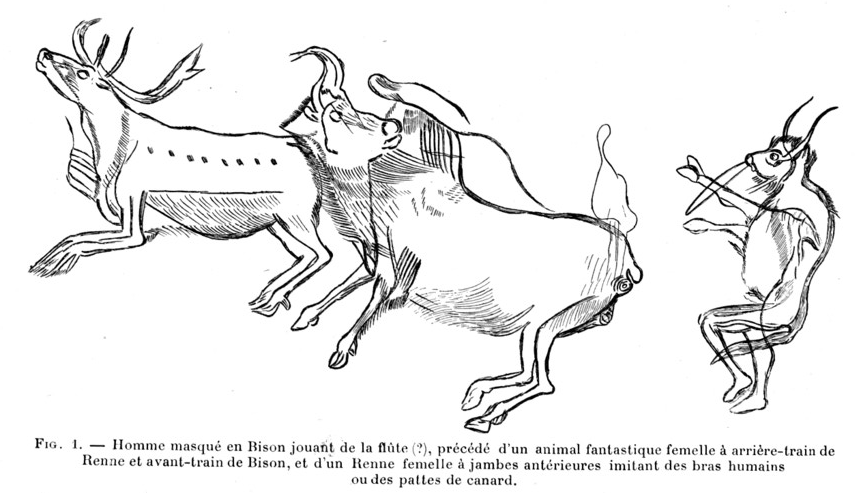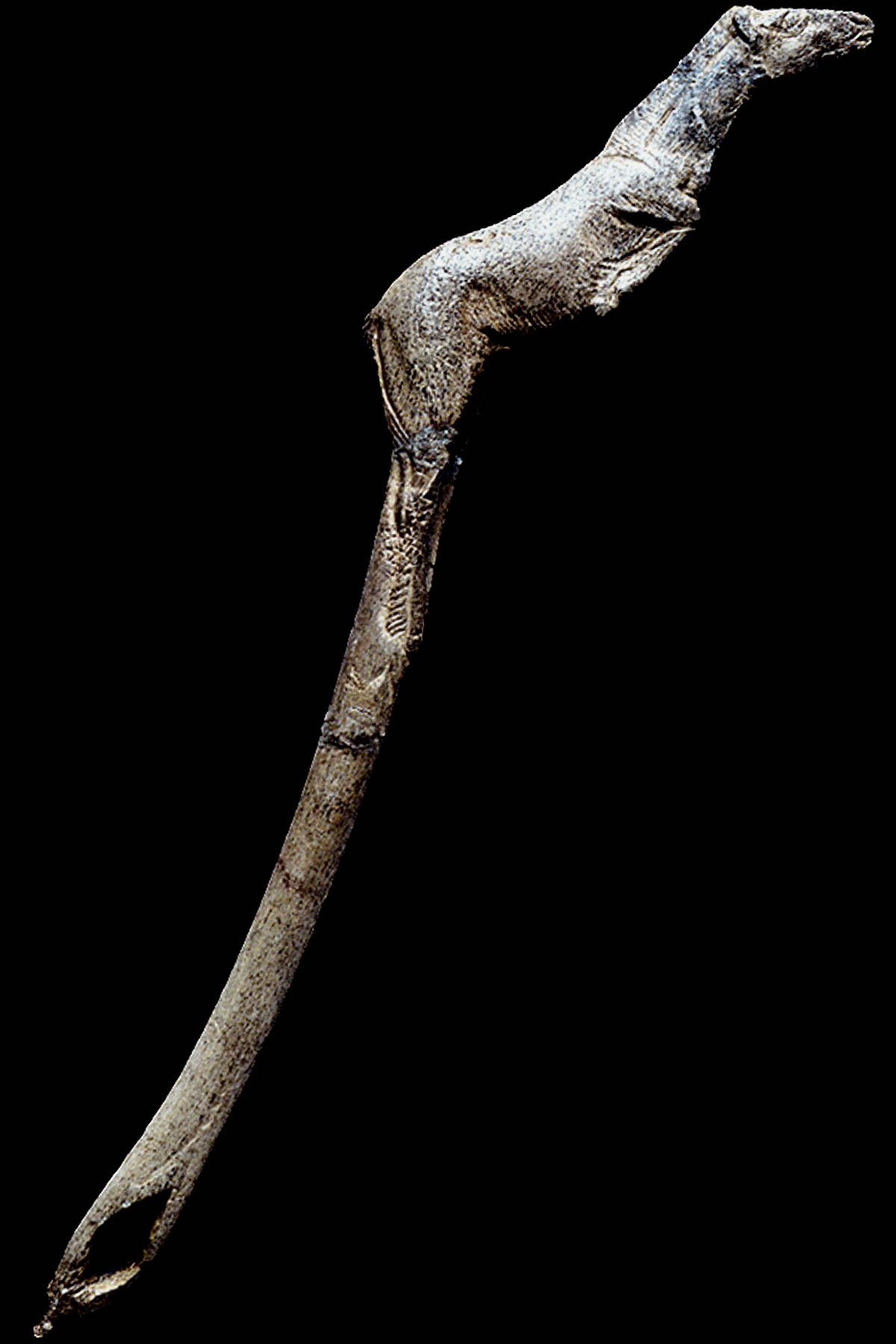The first artists
 |
| Pictures found in the Trois-Freres cavern, southern France, include a flute-playing bison man; he may resemble masked dancers who took part in Stone Age hunting rituals. |
We'll probably never know when it was people who began singing and dancing for the first time, or how to interpret and re-enact things that fascinated them. The first people to do those things— the first singers, dancers, storytellers, and actors— died long before our earliest written records began. We do know though that at least 15,000 years ago people were singing, dancing, and so on. We know this since cave paintings show men dancing and chanting around that time. What aim lies behind pictures like this? As men first began drawing pictures and carving stones to depict animals and other men's forms, their primary purpose was to make magic almost sure. We believed, or so we assume, that their produced objects contained secret powers that could be used to manipulate natural occurrences. This belief shows that a hunter who drew a deer, say, thus gained some control over a true deer.
 |
| Early men probably believed that figurines, like this one found in Austria, ensured fertility. |
Around those early paintings, drawings and sculptures, certain patterns of words and gestures were probably developed that were repeated at special times. Those repetitive acts and movements were the ritual starting point. Magic and ritual together gave man the first stimulus to master those skillful uses of the voice, body, and hand we call "the arts."
Prehistoric men probably didn't have such a term as "art." For them, carvings and sketches were mostly the tools of their magic, although some of them had to take artistic pleasure in what they made. Probably among the earliest forms of this art-magic (maybe as many as 90,000 years ago) was the attempt to capture shadows permanently by painting their outlines on rock walls. Another kind of early "picture" is the tracing of hands. Another type of early "image" is hand tracing. Some experts believe that these early mechanical attempts to make drawings were a mystical assurance of an instinct that still expressed itself in the urge for modern men to take photos or create portraits of some of the personalities of their creators. But even if we don't completely understand the motives behind the things primitive men created, we can derive a lot of enjoyment and curiosity from looking at them and we can even make some rational guesses as to why they were made.
 |
| img-Altamira. painting horse pierced with arrows brought success in hunting. |
The caves of Southern France and northern Spain are among the most remarkable and fascinating examples of art in the Stone Age. There, certain caves were mystical or sacred places; and deep inside them, where no sun ever penetrated, pictures drawn and graved by people. It must be an incredible journey through the fields, illuminated by flickering torches, to paint bison, hawks and other animals that look natural. These could be painted to ensure hunting success. In addition to the drawings of the beasts, there are enigmatic signs and symbols, which may have been partially magical tools designed to ensure that the tribe would be born with enough children to allow it to survive.
 |
| img-bradshawfoundation. Stone Age tool, decoreted with a jumping horse on a reindeer antler. |
Pictures found in southern France's Trois-Frères Cavern indicate that rituals were possibly performed in connection with painting creation. There are men's paintings dressed in skins and wearing masks of animals, seemingly dancing, singing and playing a sort of musical instrument. Such indicates that our ancestors had a diverse culture and many of the skills that were to be formed later as separate arts.
The so-called "wizard" of Trois-Frères presides over all the pictures of animals and dancing people, dressed in animal skins and wearing stag antlers. Someone like him possibly performed ceremonies to initiate boys of the tribe into manhood or to ensure that their food and reproduction were healthy. These rites definitely succeeded in making people more trustworthy, brave and ambitious than otherwise. The works derived from these early singings and dances often have an enticing and inspiring effect on men today that is rather similar. Animal designs on this Persian cup which is 5000 years old are as stylized as geometric symbols. Pattern at the rim is a row of long-necked water birds; a circle of galloping dogs at the center; an ibex with large horns at the foot.

ConversionConversion EmoticonEmoticon